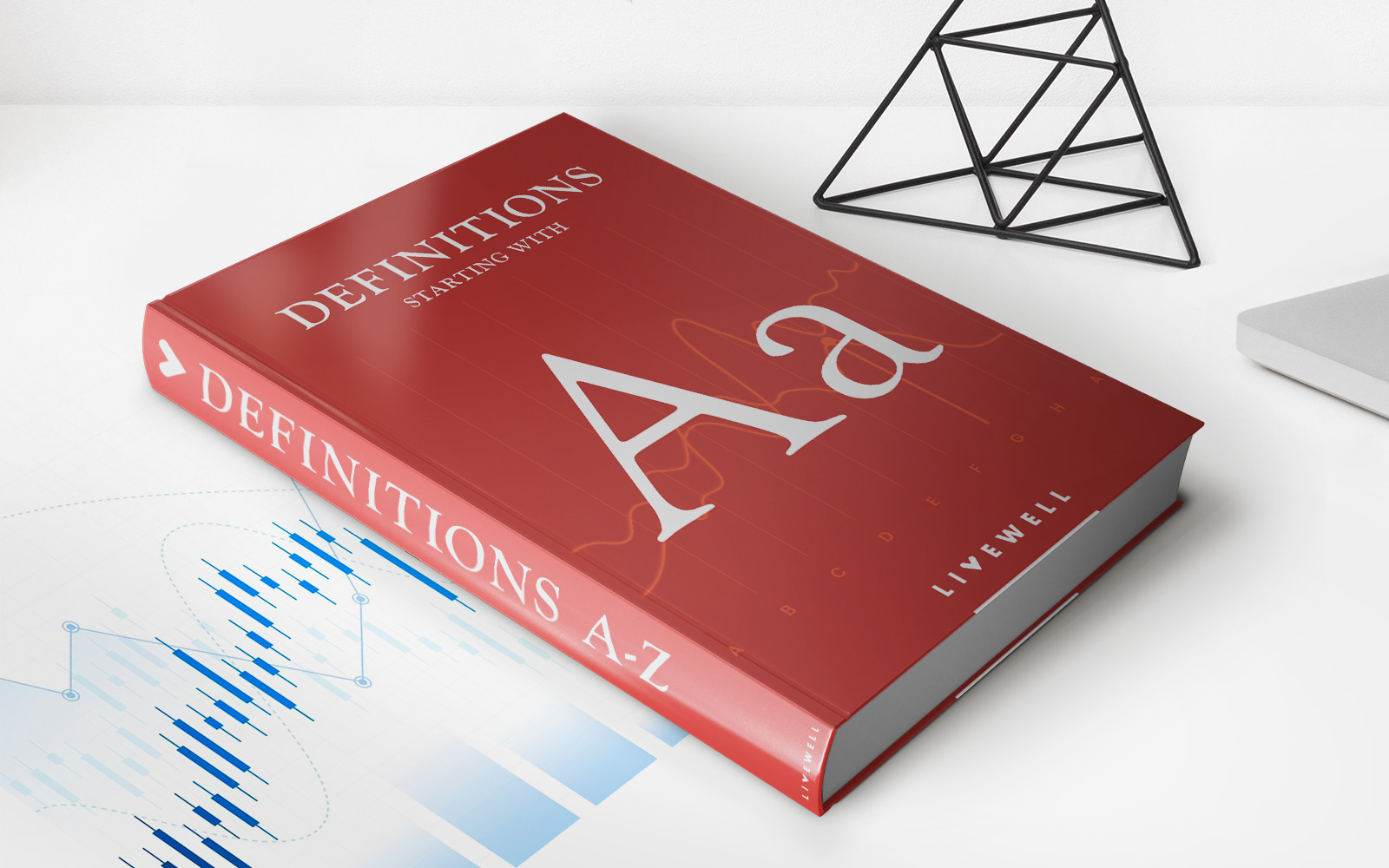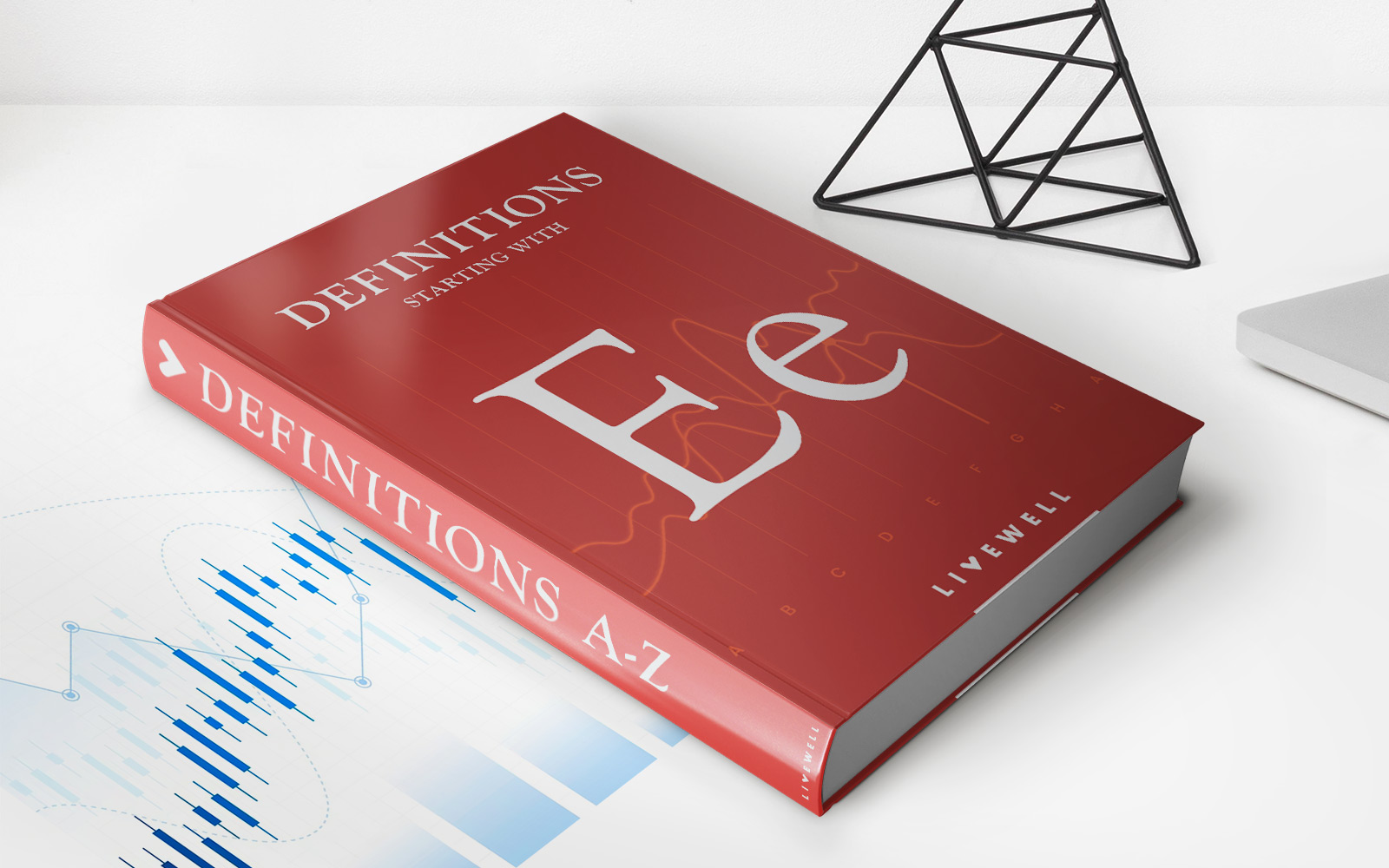Home>Finance>What Is The Difference Between Available Credit And Current Balance


Finance
What Is The Difference Between Available Credit And Current Balance
Published: January 10, 2024
Discover the key distinction between available credit and current balance in the world of finance. Learn how these two terms impact your financial decisions.
(Many of the links in this article redirect to a specific reviewed product. Your purchase of these products through affiliate links helps to generate commission for LiveWell, at no extra cost. Learn more)
Table of Contents
- Introduction
- Definition of Available Credit
- Definition of Current Balance
- Factors that Affect Available Credit
- Factors that Affect Current Balance
- Understanding the Relationship between Available Credit and Current Balance
- Importance of Monitoring Available Credit and Current Balance
- Tips for Managing Available Credit and Current Balance
- Conclusion
Introduction
When it comes to managing your finances, understanding the terms and concepts associated with credit is crucial. Two such terms that often cause confusion are available credit and current balance. While they may sound similar, they refer to different aspects of your credit account. Knowing the difference between the two can help you make informed decisions about your spending and financial planning.
Available credit refers to the amount of credit that you have at your disposal. It represents the maximum amount you can charge to your credit account without exceeding your credit limit. On the other hand, current balance refers to the total amount of money you owe on your credit account at a given point in time. This includes any outstanding balances, purchases, fees, and interest charges.
In this article, we will delve deeper into the definitions of available credit and current balance, explore the factors that affect them, understand their relationship, and discuss the importance of monitoring them. Additionally, we will provide some valuable tips on managing your available credit and current balance effectively.
Definition of Available Credit
Available credit refers to the amount of credit that is available to you for use on your credit account. It is the difference between your credit limit and your current balance. In simpler terms, it is the maximum amount of money you can charge to your credit card without exceeding your credit limit.
When you are approved for a credit card or line of credit, the issuer assigns a specific credit limit, which is the maximum amount of money you can borrow. This credit limit is determined based on various factors, including your credit history, income, and overall creditworthiness. Your available credit is constantly changing as you make credit card purchases and payments.
For example, let’s say your credit card has a credit limit of $5,000. If your current balance is $1,000, then your available credit would be $4,000. This means you have $4,000 left that you can spend before you reach your credit limit.
It’s important to note that your available credit is not a reflection of your ability to make purchases. Just because you have a credit limit of $5,000 doesn’t mean you should spend up to that limit. Responsible credit card usage involves keeping your credit utilization ratio low, which is the percentage of your available credit you are using. Keeping your credit utilization ratio below 30% is generally recommended to maintain a healthy credit score.
Monitoring your available credit is essential for financial planning. By keeping track of your available credit, you can avoid overspending and ensure that you have enough credit available for emergencies or unexpected expenses.
Definition of Current Balance
Current balance refers to the total amount of money you owe on your credit account at a specific moment in time. It includes any outstanding balances, purchases, fees, and interest charges that have been applied to your account.
When you use your credit card to make purchases or perform other transactions, the amount you owe increases. This accumulates as your current balance. Any payments you make toward your credit card balance reduce the current balance. However, if you have not made a payment for a billing cycle, the current balance will continue to accrue interest charges.
It’s important to regularly check and understand your credit card statement to keep track of your current balance. The statement will provide detailed information about your charges, payments, interest rates, and any applicable fees. This will help you stay informed about the amount you owe and the associated charges.
For example, if you made a $500 purchase and your current balance was previously $1,000, your new balance would be $1,500. This includes the original balance plus the new purchase. If you made a minimum payment of $100, your current balance would decrease to $1,400.
It’s crucial to pay attention to your current balance and make timely payments to avoid additional interest charges and late fees. Failure to do so can negatively impact your credit score and result in additional financial burdens.
Understanding your current balance is essential for effective financial management. By keeping track of your balance, you can budget your expenses, plan your payments, and avoid accumulating excessive debt.
Factors that Affect Available Credit
Several factors can influence your available credit. Understanding these factors can help you make better financial decisions and maintain a healthy credit profile. Let’s explore some key factors that affect your available credit:
- Credit Limit: Your credit limit, set by the credit card issuer, is the maximum amount you can charge to your credit account. This is a significant factor in determining your available credit. If you have a higher credit limit, your available credit will be greater compared to someone with a lower credit limit.
- Outstanding Balances: If you have any outstanding balances or unpaid debts on your credit account, it will reduce your available credit. Paying off your debts and reducing your outstanding balances will increase your available credit.
- Credit Utilization Ratio: Your credit utilization ratio is the percentage of your available credit that you are currently using. It is an important factor in determining your creditworthiness. If your credit card balances are consistently close to or at your credit limit, it can negatively impact your credit score and reduce your available credit.
- Payment History: Your payment history plays a vital role in determining your available credit. Consistently making payments on time and in full demonstrates responsible financial behavior, leading to a positive credit history. On the other hand, missed or late payments can negatively affect your credit score and limit your available credit.
- Credit Score: Your credit score is a numerical representation of your creditworthiness. Lenders and credit card issuers use your credit score to assess your risk as a borrower. A higher credit score indicates a lower risk, which can result in a higher credit limit and more available credit.
- Income and Debt-to-Income Ratio: Your income and debt-to-income ratio can also impact your available credit. A higher income and a lower debt-to-income ratio may lead to a higher credit limit, thereby increasing your available credit.
It’s important to keep in mind that these factors can change over time, affecting your available credit. Monitoring your credit, making timely payments, and managing your debts responsibly can help maintain a healthy credit profile and increase your available credit.
Factors that Affect Current Balance
There are several factors that can influence your current balance on a credit account. Understanding these factors can help you manage your finances effectively and make informed decisions about your spending. Let’s explore some key factors that affect your current balance:
- Purchases: One of the primary factors that contribute to your current balance is the purchases you make using your credit card. Every time you use your card to buy goods or services, the amount of the transaction adds to your current balance.
- Interest Charges: If you carry a balance on your credit card, interest charges will be applied to your current balance. The interest rate, which is determined by the credit card issuer, is a percentage of the outstanding balance. The higher the balance and interest rate, the greater the interest charges.
- Cash Advances: Taking out cash advances using your credit card can also add to your current balance. Cash advances often have higher interest rates and additional fees, so it’s important to use them sparingly to avoid unnecessary debt.
- Fees: Certain fees, such as annual fees, late payment fees, and balance transfer fees, can increase your current balance. These fees are typically added to your balance if they are not paid upfront.
- Refunds and Returns: If you return a purchase or receive a refund for a previous transaction, the refunded amount will be subtracted from your current balance. This can help lower your overall debt and reduce your current balance.
- Payments: Making payments towards your credit card balance reduces your current balance. The more you pay, the lower your balance becomes. It’s important to make timely and consistent payments to keep your current balance under control.
It’s crucial to keep track of these factors and monitor your current balance regularly. By doing so, you can stay aware of the amount you owe and make appropriate financial decisions. Paying off your balance in full or reducing it as much as possible can help minimize interest charges and maintain a healthy financial outlook.
Understanding the Relationship between Available Credit and Current Balance
The relationship between available credit and current balance is crucial for understanding your overall financial situation. These two factors are interconnected and can have a significant impact on your creditworthiness and financial health.
Available credit represents the maximum amount you can charge to your credit account without exceeding your credit limit. It represents the credit that is available to you for use. On the other hand, current balance refers to the total amount of money you owe on your credit account at a given point in time, including outstanding balances, purchases, fees, and interest charges.
The relationship between available credit and current balance can be understood in the following ways:
- Available Credit and Credit Utilization Ratio: Your credit utilization ratio is the percentage of your available credit that you are currently using. It is an essential factor in calculating your credit score. A higher credit utilization ratio, where you are close to maxing out your available credit, can negatively impact your credit score. On the other hand, maintaining a low credit utilization ratio demonstrates responsible credit usage and can improve your creditworthiness.
- Impact of Current Balance on Available Credit: As you accumulate a current balance by making purchases, your available credit decreases. For example, if you have a credit limit of $10,000 and a current balance of $2,000, your available credit would be $8,000. It’s important to keep an eye on your current balance to ensure that you don’t exceed your credit limit and have enough available credit for future expenses.
- Managing Available Credit and Current Balance: Keeping a balance between your available credit and current balance is essential for responsible credit management. It’s advisable to maintain a low credit utilization ratio by using only a portion of your available credit. By doing so, you can minimize the risk of accruing excessive debt and improve your credit score. Regularly monitoring your available credit and current balance allows you to make informed financial decisions and stay in control of your finances.
- Financial Planning and Emergency Preparedness: Understanding the relationship between available credit and current balance enables you to plan your finances effectively. By keeping your current balance low and maintaining a healthy available credit, you have the flexibility to handle unexpected expenses or emergencies without incurring significant debt. This provides you with a sense of financial security and peace of mind.
Overall, comprehending the relationship between available credit and current balance is crucial for managing your credit effectively and maintaining a solid financial foundation. By monitoring your available credit, keeping your current balance under control, and making timely payments, you can build a positive credit history and achieve financial stability.
Importance of Monitoring Available Credit and Current Balance
Monitoring your available credit and current balance is essential for maintaining healthy financial habits and managing your credit effectively. Here are several reasons why it’s important to keep a close eye on these numbers:
- Financial Awareness: Monitoring your available credit and current balance provides you with a clear picture of your financial situation. It allows you to understand how much credit you have available for use and how much you owe at any given time. This knowledge helps you make informed decisions about your spending and avoid overspending.
- Preventing Overspending: By monitoring your available credit, you can ensure that you don’t exceed your credit limit. This helps prevent the accumulation of excessive debt and the resulting financial burden. It also enables you to plan your expenses within your available credit limit and avoid the temptation of impulse purchases.
- Managing Credit Utilization Ratio: Your credit utilization ratio, which is the percentage of your available credit that you are currently using, plays a crucial role in determining your creditworthiness. By monitoring your available credit and current balance, you can keep your credit utilization ratio low. A low utilization ratio demonstrates responsible credit management and positively impacts your credit score.
- Identifying Unauthorized Charges: Regularly monitoring your credit card statement and current balance allows you to quickly identify any unauthorized or fraudulent charges. By catching these charges early, you can take immediate action to dispute them and protect yourself from financial loss.
- Maintaining a Good Credit Score: Your credit score is influenced by factors such as on-time payments, credit utilization, and the length of your credit history. By monitoring your available credit and current balance, you can make timely payments, avoid maxing out your credit cards, and maintain a positive credit history. This, in turn, contributes to a higher credit score and better access to credit in the future.
- Emergency Preparedness: Monitoring your available credit and current balance ensures that you have enough credit available for unexpected expenses or emergencies. Maintaining a good credit standing allows you to access credit quickly if needed, providing you with a financial safety net.
By regularly monitoring your available credit and current balance, you can stay in control of your financial well-being. It enables you to make conscious financial decisions, maintain a healthy credit profile, and achieve long-term financial goals. Remember to review your credit card statements, check your online banking regularly, and utilize financial management tools to stay on top of your available credit and current balance.
Tips for Managing Available Credit and Current Balance
Effectively managing your available credit and current balance is crucial for maintaining a healthy financial outlook. Here are some valuable tips to help you stay in control of your credit and manage your balances responsibly:
- Create a Budget: Develop a comprehensive budget that outlines your income, expenses, and financial goals. This will help you prioritize your spending and ensure that you are using your available credit wisely.
- Track Your Transactions: Keep a record of your credit card purchases and payments. Regularly review your credit card statements and online banking to ensure that all transactions are accurate and to identify any unauthorized charges.
- Pay on Time: Make it a priority to always pay your credit card bills on time. Late payments can result in additional fees and negatively impact your credit score. Consider setting up automatic payments or creating reminders to help you stay on track.
- Pay More Than the Minimum: Whenever possible, aim to pay more than the minimum payment required on your credit card. By doing so, you can reduce your current balance faster and minimize interest charges in the long run.
- Reduce Unnecessary Expenses: Review your spending habits and identify areas where you can cut back. By reducing unnecessary expenses, you can free up more of your available credit and reduce your current balance.
- Keep Credit Utilization Low: Aim to keep your credit utilization ratio below 30%. This means using no more than 30% of your available credit. Keeping your credit utilization low demonstrates responsible credit usage and positively impacts your credit score.
- Avoid Maxing Out Credit Cards: Maxing out your credit cards can lead to high levels of debt and financial stress. Instead, aim to use your credit cards responsibly and keep your balances manageable.
- Monitor Credit Score: Regularly check your credit score to gauge your creditworthiness. Monitoring your credit score allows you to identify areas for improvement and take steps to enhance your credit profile.
- Communicate with Creditors: If you are having difficulty making payments or managing your credit, reach out to your creditors. They may be able to offer assistance, such as adjusting payment terms or providing a temporary hardship program.
- Review and Adjust: Periodically review your available credit, current balance, and overall financial situation. Adjust your spending habits and credit utilization as needed to align with your financial goals.
Remember, managing your available credit and current balance requires consistency and discipline. By implementing these tips, you can maintain a healthy credit profile, avoid excessive debt, and work towards a strong financial future.
Conclusion
Understanding and effectively managing your available credit and current balance are essential aspects of maintaining a healthy financial life. By comprehending the difference between these two concepts and their relationship, you can make informed decisions about your spending, debt management, and credit utilization.
Monitoring your available credit ensures that you have a clear understanding of how much credit you have available for use. This knowledge helps you avoid overspending, maintain a healthy credit utilization ratio, and plan your expenses within your credit limit. By keeping your current balance under control, you can minimize interest charges, avoid accumulating excessive debt, and improve your overall credit profile.
Regularly reviewing your credit card statements, tracking your transactions, and making timely payments are crucial for managing your credit effectively. Additionally, creating a budget, reducing unnecessary expenses, and aiming to pay more than the minimum payment can help keep your available credit and current balance in check.
Remember to monitor your credit score, communicate with your creditors if you encounter financial difficulties, and make adjustments to your financial habits as needed. By doing so, you can maintain a healthy credit profile, achieve your financial goals, and enjoy greater financial security.
In conclusion, managing your available credit and current balance is an ongoing process that requires diligence and discipline. By following the tips outlined in this article, you can maintain control over your credit, optimize your financial well-being, and pave the way for a strong financial future.














